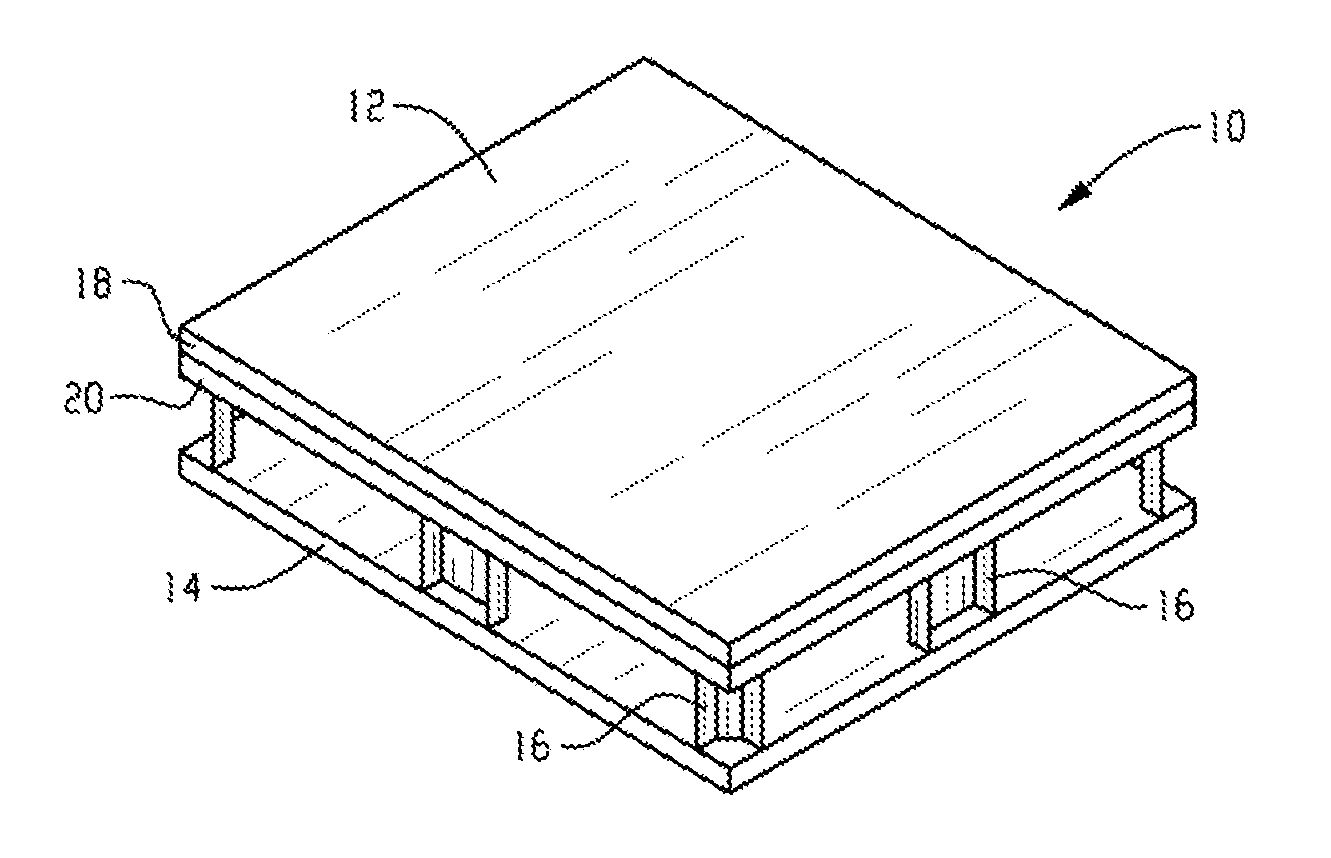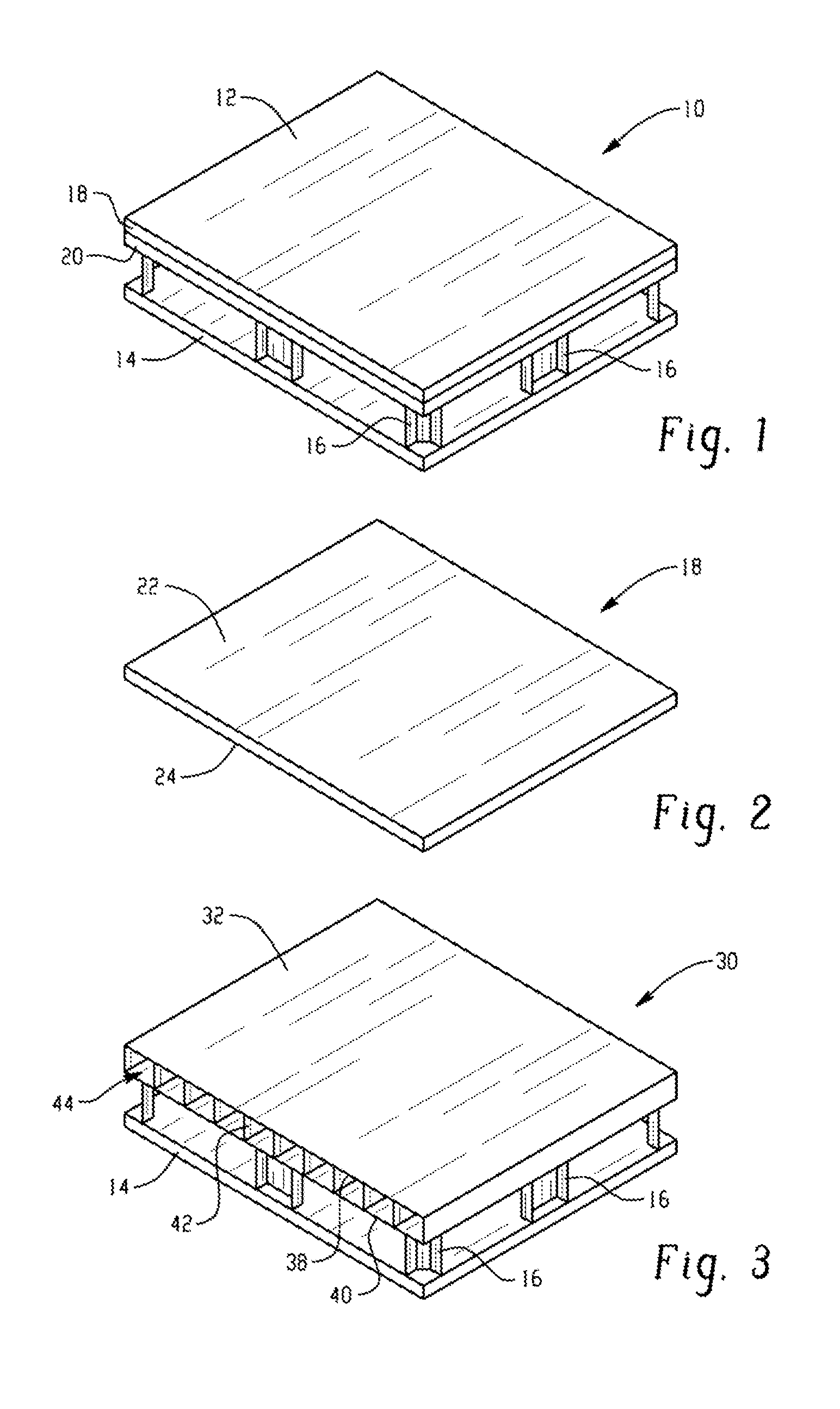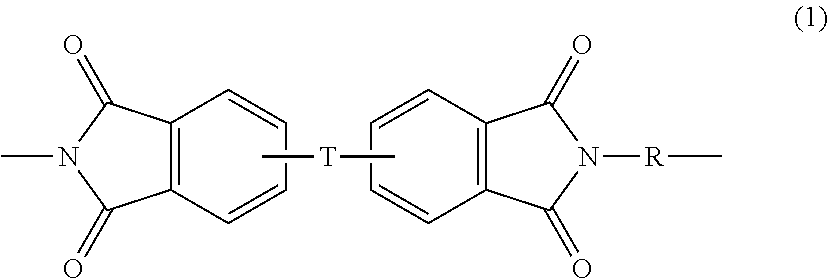Pallet and methods of making and using the same
a technology of pallets and methods, applied in the field of pallets, can solve the problems of deterioration of wooden pallets, affecting the quality of wooden pallets,
- Summary
- Abstract
- Description
- Claims
- Application Information
AI Technical Summary
Benefits of technology
Problems solved by technology
Method used
Image
Examples
example 1
[0067]Results from the ASTM E84-07b test demonstrate the desirable reaction-to-fire aspects of the Composite Board material (i.e., ULTEM* 1000 resin) as the primary polymeric component. In the ASTM E84-07b tests, a sample of approximately 21 inches wide by 24 feet long is exposed to methane flames approximately 4.5 feet long. The sample is held in a “ceiling position”, with the flames applied underneath. The Composite Board material had a flame spread of 0, which is comparable to non-flammable cement board under the same conditions. The material also remained in the ceiling position and within the flames throughout the 10-minute test duration. Maintaining structural integrity during this larger-scale flame test is an important attribute, since the dual matrix composite will also be protecting the pallets in the UL 2335 (Second Edition, Jul. 28, 2010) test, not just providing a low flame spread surface.
[0068]In one embodiment, a pallet comprises: a top deck comprising a substrate hav...
PUM
| Property | Measurement | Unit |
|---|---|---|
| melt temperature | aaaaa | aaaaa |
| weight | aaaaa | aaaaa |
| distances | aaaaa | aaaaa |
Abstract
Description
Claims
Application Information
 Login to View More
Login to View More - R&D
- Intellectual Property
- Life Sciences
- Materials
- Tech Scout
- Unparalleled Data Quality
- Higher Quality Content
- 60% Fewer Hallucinations
Browse by: Latest US Patents, China's latest patents, Technical Efficacy Thesaurus, Application Domain, Technology Topic, Popular Technical Reports.
© 2025 PatSnap. All rights reserved.Legal|Privacy policy|Modern Slavery Act Transparency Statement|Sitemap|About US| Contact US: help@patsnap.com



